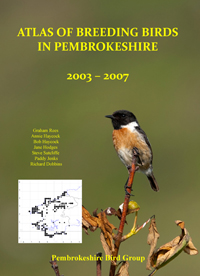Red-necked Phalarope - 2008
 Tuesday, July 19, 2011 at 8:15PM
Tuesday, July 19, 2011 at 8:15PM Phalaropus lobatus
Vagrant.
The Red – necked Phalarope breeds above the middle latitudes across the Holarctic, the nearest to Pembrokeshire normally in the far north of Scotland. Western Palearctic birds winter in the Arabian Sea and largely migrate overland.
A juvenile shot on a farm pond at St Twynells in c.1900 was housed in the collection of F. Roberts. Bertram Lloyd examined the specimen on the 20th May 1928 and verified the identification was correct. Lockley et al (1949) quotes “Recorded by a writer in the Field, 18th March 1899” but gives no detail, not even a locality. Barrett, 1959, noted singles off St Ann’s Head (not St Govan’s as quoted by Donovan and Rees, 1994) on the 19th September 1950 and at the Gann on the 16th September 1957. Subsequently there was a juvenile on a farm slurry pond at Haroldston West on the 4th and 5th October 1983.
Graham Rees.
(Covers records up to and including 2008).
 GHR,
GHR,  Wader,
Wader,  vagrant in
vagrant in  Red-necked Phalarope
Red-necked Phalarope 
